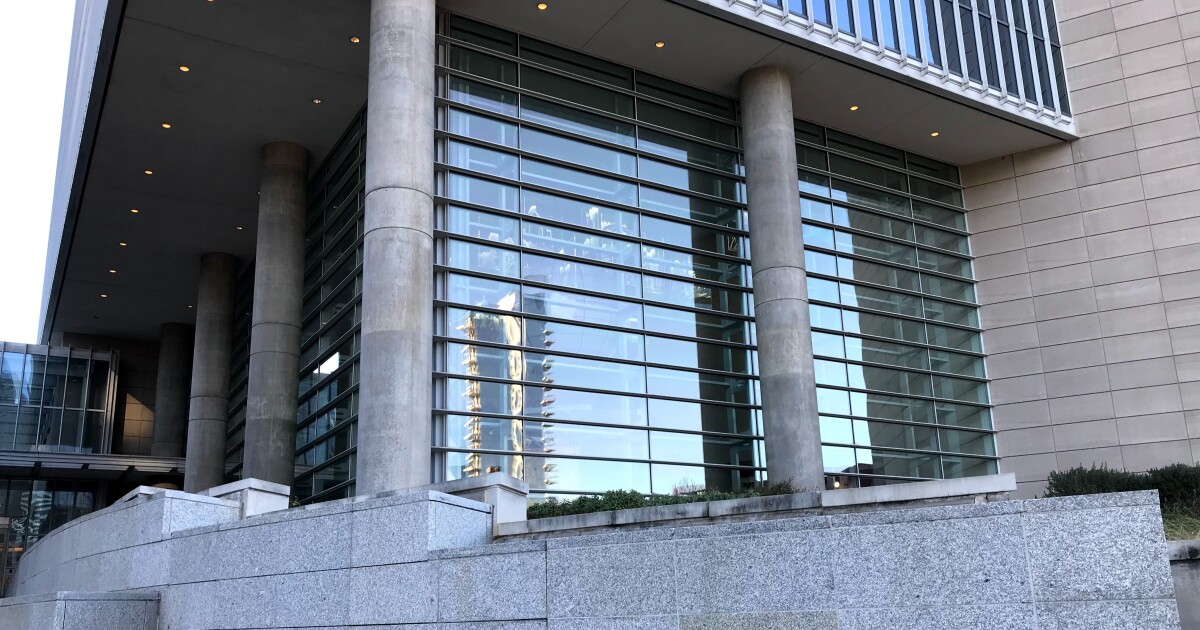Low job growth, less construction activity and inflation numbers are all indicating the Texas economy is slowing down, according to an Aug. 11 report out of the Federal Reserve Bank of Dallas.
The economic slowdown comes during a time when the Trump administration is reshaping global trade and immigration policy – two key factors in the Texas economy.
Texas employment in June – job data usually lags a few months behind – fell by 1.3% from the month before. Job growth since the beginning of the year has slowed to 1.8%, which is higher than the .7% rate nationally, but lower than the 2.5% increase Texas saw in May.
“Other labor market indicators have remained healthy,” according to the report. “The Texas unemployment rate declined to 4.0 percent, and average hourly earnings increased 4.9 percent year-over-year in June.”
Report author Luis Torres told KERA News this is likely because while businesses are slowing down on creating new jobs, they are holding on to the ones they have.
A Dallas Fed survey in late July showed businesses are starting to feel the effects of a loss of foreign born workers – which encompasses a variety of people like those here on work visas and those seeking asylum. That survey was released amidst the Trump administration’s ongoing effort to curb immigration and ramp up deportations.
The drop in employment follows a report from the Bureau of Labor Statistics that revised down national job growth in May and June and showed growth slowed more than expected in July. President Donald Trump fired the BLS commissioner Erika McEntarfer after she released those statistics, claiming in a social media post without evidence she had “RIGGED” the numbers to make Trump and Republicans look bad.
Construction woes
The report also shows construction has decreased across the board in Texas. The average construction contract value for the past five months has fallen 26%, according to the report. Residential construction is 7% lower, indicating a weaker housing market. Multifamily constructions rose 4% in June, but even that is a slowdown from 7% in May.
The report cited the Association of General Contractors of America, which claimed rapidly changing tariffs were creating cost uncertainty, forcing builders to pause or cancel new projects.
“Unless contractors and investors have greater certainty about what costs and demand to expect, private construction is likely to continue declining,” Jeffrey D. Shoaf, the association’s chief executive officer, said in a June press release. “That will make the U.S. less competitive and damage the prospects for economic growth.”
Inflation and tariffs
The state’s inflation numbers tell an uncertain story.
Year-over-year inflation in Texas has increased just 1% as of May, according to the report.
“These low inflation readings are concerning and puzzling,” the report states.
Concerning because low inflation can indicate customers aren’t buying as much stuff, although many customers will likely appreciate the lower price increases.
“Normally, when you have a hot economy or a lot of activities sometimes that pushes up prices,” Torres told KERA. “And when the economy is softening or weakening that kind of pushes down prices.”
It’s puzzling because tariffs should have forced prices higher by now.
“The effective tariff rate has risen nationally from 2.4 percent to 17.5 percent and should be trickling through to prices,” according to the report. “While businesses may not pass on the full cost of tariffs to customers, they will likely pass on some.”
The slower price increase could show businesses have stocked up on inventory ahead of the tariffs and have some ability to absorb higher costs in the short term, according to the report. The Fed expects to know more of the effects of tariffs in later data.
Michelle Schulz, founder of Schulz Trade Law in Dallas, which advises companies that import goods, told KERA News her clients were able to absorb the cost of tariffs in the beginning, but as more tariffs piled on and pauses on the tariffs ended, the companies have started to increase prices.
“We’ve also talked to companies that are international, maybe based in another country but that have a facility here, and they’re looking at whether or not to leave the U.S. altogether because the U.S. tariff is higher than any other tariffs that they’re paying in their sales structure,” Schulz said. “I think that the U.S. is not as desirable as it was before. It’s become kind of an untrusted entity and that’s very unfortunate because we had such good relationships with these countries,” she said.
The Trump administration has said tariffs will bring manufacturing back to America and punish countries they allege have taken advantage of the U.S. The Washington Post reported on Aug. 9 the administration has also used tariffs to benefit U.S. military interests and individual companies like Chevron and Starlink.
The report concluded the Dallas Fed expects Texas employment to increase 1.7% in 2025, which falls just below the 2% long-run trend.
“The economy is softening,” Torres said, “but it’s not going down the drain.”
Dylan Duke is KERA’s Fall news intern. Got a tip? Email Dylan Duke at dduke@kera.org.
KERA News is made possible through the generosity of our members. If you find this reporting valuable, consider making a tax-deductible gift today. Thank you.
